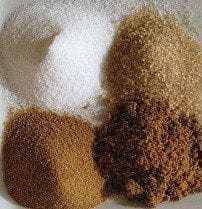
In our last update “Ahead of the Curve on Health Info”, we reported that consumers are souring on highly-sweetened foods and beverages, and the loss in profits is making manufacturer reduce sugar content in some items. If you are healing from an accident, weight loss and better health will aid in your recovery, so you will also want to avoid foods with added sugar, or, even worse, with sugar as the main component. the assumption often is, “if sugar is bad for me, then non-sugar sweeteners are better”.
But is this true? The nutrition initiative, SugarScience.org, cites a study conducted by the University of Texas Health Science Center in San Antonio, which compared waist circumference of 375 seniors over a period of about 9 years and found that diet soda drinkers had a nearly four-fold higher increase in belly fat when compared with those who did not drink diet sodas. Occasional diet soda sippers’ waist measurements fell in between the measurements of abstainers and drinkers.
The most interesting part of this study is that the selected diet soda consumers used diet drinks as part of a lifestyle which includes active leisure and avoiding smoking, against a background of higher education and affluence.
In other words, despite being a group which was obviously motivated to preserve their health, they continuously gained weight and put themselves at risk of developing Metabolic Syndrome, the disorder which includes diabetes, heart disease, high blood pressure, high triglycerides, low HDL, and is most obviously signaled by a large waist circumference.
A research article from Nature indicates that artificial sweeteners of all types, saccharine (Sweet’n’Low), aspartame (NutraSweet), and sucralose (Splenda) all affect blood sugar levels, despite being sugar-free. Many of the mechanisms which cause this seemingly paradoxical effect are unknown, but researchers did observe a distinct change in the gut bacteria. It is now known that the “microbiome” of your gut flora has a major impact on your metabolism.
Dr. David Perlmutter, author of Grain Brain, discusses the probable bacterial stimulus for obesity. When doctors tried to treat a patient by injecting bacterial cultures to combat an infection, the result was a large weight gain. An article from the American Journal of Gastroenterology indicates that different gut flora (bacteria) process the food we eat in different ways, including processing some fiber (fructans) into fructose. Fructose, a component of sugar and corn syrup, is linked to non-alcoholic fatty liver disease. Storing lots of fructose-derived fat in the liver and surrounding organs will increase waist circumference, which brings us back again to weight gain.
So, if you are thirsty, and you want to keep your weight lower, stick to unsweetened beverages! Remember, that simple solutions such as drinking water instead of cola are one way to improve your healing.
Showing you the way to recover your health is another way we at Stillman and Friedland are here for you. Because we care…
* This blog entry should not be construed as medical advice or treatment for any specific condition. Only a licensed medical professional can properly diagnose and treat medical conditions. If you have any question regarding your health, please consult with your healthcare provider.






